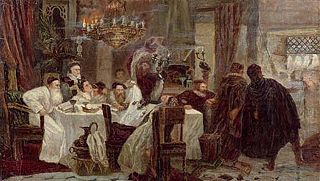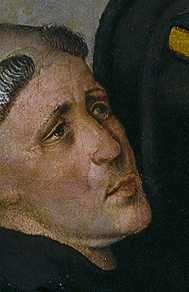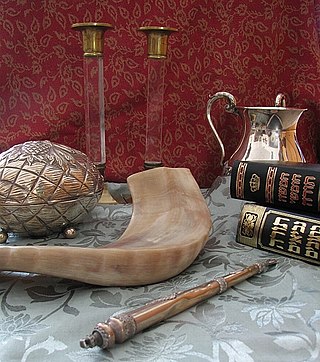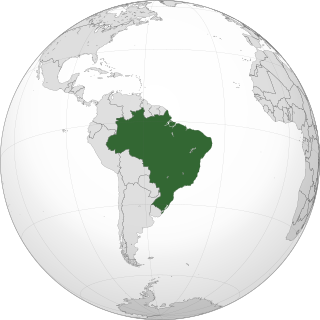
Pope Paul IV, born Gian Pietro Carafa, was head of the Catholic Church and ruler of the Papal States from 23 May 1555 to his death, in August 1559. While serving as papal nuncio in Spain, he developed an anti-Spanish outlook that later coloured his papacy. In response to an invasion of part of the Papal States by Spain during his papacy, he called for a French military intervention. After a defeat of the French and with Spanish troops at the edge of Rome, the Papacy and Spain reached a compromise: French and Spanish forces left the Papal States and the Pope thereafter adopted a neutral stance between France and Spain.

Marranos is a term for Spanish and Portuguese Jews who converted to Christianity, either voluntarily or by Spanish or Portuguese royal coercion, during the fifteenth and sixteenth centuries, but who continued to practice Judaism in secrecy or were suspected of it. They are also called crypto-Jews, the term increasingly preferred in scholarly works over Marranos.

Tomás de Torquemada, also anglicized as Thomas of Torquemada, was a Roman Catholic Dominican friar and first Castillian Grand Inquisitor of the Tribunal of the Holy Office, which was a group of ecclesiastical prelates created in 1478 and charged with the somewhat ill-defined task of "upholding Catholic religious orthodoxy" within the lands of the newly formed union of the crowns of Castile and Aragon, presently known as the Kingdom of Spain.

A converso, "convert", was a Jew who converted to Catholicism in Spain or Portugal, particularly during the 14th and 15th centuries, or one of their descendants.

Crypto-Judaism is the secret adherence to Judaism while publicly professing to be of another faith; practitioners are referred to as "crypto-Jews".
Anusim is a legal category of Jews in halakha who were forced to abandon Judaism against their will, typically while forcibly converted to another religion. The term "anusim" is most properly translated as the "coerced [ones]" or the "forced [ones]".
The History of Sephardic Jews in England consists of the Sephardic Jews' contribution and achievement in England.

New Christian was a socio-religious designation and legal distinction referring to the population of former Jewish and Muslim converts to Christianity in the Spanish and Portuguese empires, and their respective colonies in the New World. The term was used from the 15th century onwards primarily to describe the descendants of the Sephardic Jews and Moors that were baptized into the Catholic Church following the Alhambra Decree of 1492. The Alhambra Decree, also known as the Edict of Expulsion, was an anti-Jewish law made by the Catholic Monarchs upon the Reconquista of the Iberian Peninsula. It required Jews to convert to Roman Catholicism or be expelled from Spain. Most of the history of the "New Christians" refers to the Jewish converts, who were generally known as Conversos, while the Muslim converts were called Moriscos.

The history of the Jewish community in Belmonte, Portugal, dates back to the 13th century; the community was composed of Spanish and Portuguese Jews who kept their faith through crypto-Judaism.
Francisco Maldonado da Silva was an Argentine marrano physician who was burned at the stake with eleven other Jews in Lima, Peru, in the largest Auto-da-fé recorded in history. His life has been novelized by Argentine best selling author Marcos Aguinis in the book Against the Inquisition.

The history of the Jews in Portugal reaches back over two thousand years and is directly related to Sephardi history, a Jewish ethnic division that represents communities that originated in the Iberian Peninsula. In the sixteenth and seventeenth centuries, Portuguese Jews emigrated to a number of European cities outside Portugal, where they established new Portuguese Jewish communities, including in Hamburg, Antwerp, and the Netherlands, which remained connected culturally and economically, in an international commercial network during the seventeenth and eighteenth centuries.
Marcos Aguinis is an Argentine writer. Trained in medical studies, music and psychoanalysis, his work and his thoughts are focused on the notions of independence, democracy and rejection of authoritarianism. He is a proponent of political liberalism, and participates in seminars and conferences from the Freedom Foundation organized by Mario Vargas Llosa. He is the father of business professor, researcher, and author Herman Aguinis.

The Queen's Fool by Philippa Gregory is a 2003 historical fiction novel. Set between 1548 and 1558, it is part of Philippa Gregory's Tudor series. The series includes The Boleyn Inheritance. The novel chronicles the changing fortunes of Mary I of England and her half-sister Elizabeth through the eyes of the fictional Hannah Green, a Marrano girl escaping to England from Spain where her mother was burned at the stake for being Jewish. Hannah is discovered by Robert Dudley and John Dee and subsequently begged as a fool to Edward VI. She witnesses and becomes caught up the intrigues of the young king's court, and later those of his sisters. As Mary, Elizabeth, and Robert Dudley use Hannah to gather information on their rivals and further their own aims, the novel can plausibly present each side in the complex story. The Queen's Fool follows Hannah from ages fourteen to nineteen, and her coming-of-age is interspersed among the historical narrative. The book reached # 29 on the New York Times Best Seller list and had sold 165,000 copies within three weeks of its release.

The history of the Jews in Brazil begins during the settlement of Europeans in the new world. Although only baptized Christians were subject to the Inquisition, Jews started settling in Brazil when the Inquisition reached Portugal, in the 16th century. They arrived in Brazil during the period of Dutch rule, setting up in Recife the first synagogue in the Americas, the Kahal Zur Israel Synagogue, as early as 1636. Most of those Jews were Sephardic Jews who had fled the Inquisition in Spain and Portugal to the religious freedom of the Netherlands.

Benzion Netanyahu was a Polish-born Israeli encyclopedist, historian, and medievalist. He served as a professor of history at Cornell University. A scholar of Judaic history, he was also an activist in the Revisionist Zionism movement, who lobbied in the United States to support the creation of the Jewish state. His field of expertise was the history of the Jews in Spain. He was an editor of the Hebrew Encyclopedia and assistant to Benjamin Azkin, Ze'ev Jabotinsky's personal secretary.

Sephardic Jews in India are Iberian Jews who settled in many coastal towns of India, in Goa and Damaon, Madras and, primarily and for the longest period, on the Malabar coast in Cochin. After the Portuguese discovery of the sea route to India in the 1498, a number of Sephardic Jews fled Antisemitism in Iberia which had culminated in the Edict of Expulsion in 1492 and Persecution of Jews and Muslims by Manuel I of Portugal. They settled in Portuguese Indian trading places so that they could continue practicing Judaism secretly while still remaining within the Portuguese Empire. After the Portuguese Inquisition was established, an additional number of falsely-converted Sephardic Jews made sea voyages to settle in India, because it would then be difficult for the Inquisition to investigate and punish them. They spoke the vernacular language of their kingdom and some of them also Arabic.

The history of the Jews in Chile dates back to the arrival of Europeans to the country. Over time, Chile has received several contingents of Jewish immigrants. Currently, the Jewish community in Chile comes mainly from the migrations occurred in the 19th and 20th centuries, mostly of Ashkenazi background.
Antisemitism in Chile started in early Chilean history during Spanish colonization and settlement. Now on the decline, Antisemitism has resurfaced throughout the country's history to include the 20th century Nazism in Chilean cities with German heritage. Chileans today have a positive view of the country's estimated 32,000 Jews or less than 1% of the population.
Manuel Batista Perez was a Spanish-born merchant, and multi-millionaire active in Africa, Europe, the Americas and Asia. Though Spanish, Manuel called himself Portuguese because Spanish New Christians were not allowed in the New World. Perez became extremely wealthy, according to the Jewish Encyclopedia, Perez amassed a fortune which would have been the equivalent of $1,000,000 in 1906. Perez moved to Lima with his wife and three children. He was sent with a large sum to invest for his brothers-in-law back in Spain. He was born to a Marrano family, that is to say a Sephardic Jew whose family outwardly conformed to Catholicism for socio-political reasons, but privately practiced Judaism.

Dorit Orgad is an Israeli writer. She writes children's and young adult fiction, as well as books for adults. She also taught at academic institutions.













